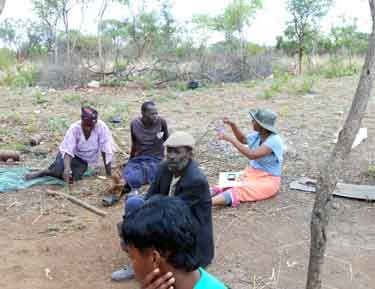Reprinted from the 2013 CSWS Annual Review (p. 21)
Change is Slow to Come for Women in Zimbabwe
2012 CSWS Jane Grant Fellowship winner studies the implications of a land reform program.
by Easther Chigumira, PhD candidate, UO Department of Geography
Zimbabwe inherited a racially-skewed land ownership structure at independence from Britain in 1980. At that time, 6,000 white farmers held 15.5 million hectares of prime agricultural land, and one million blacks held 16.4 million hectares of marginal land (Moyo and Yeros, 2005). Only in the year 2000, after nationwide “politically motivated and organized” violent occupations of mostly white-owned large-scale commercial farms by blacks, did the government embark on the radical Fast Track Land Reform Program (FTLRP) with the intent to alter this skewed land structure.
This unprecedented program constitutes the first major shift in property rights to peasant farmers since the post Cold War era and signifies a historic epoch that scholars like Mamdani (2008) and Moyo (2011) position as progressive—marking Zimbabwe’s true moment of decolonization, and achieving social justice and black economic empowerment. Despite these claims, however, and although the FTLRP policy states that women should receive 20 percent of the reallocated land, there is no data disaggregated by gender to track this. Further, Zimbabwe’s late Vice-President Joseph Msika claimed that giving women land under the FTRLP would “destroy people’s marriages” and that “men would turn against the government” (Goebels, 2005).
These issues expose a serious disjuncture between FTLRP policy and practice and the urgent need for a gendered analysis of the outcomes of the program. Unequal access to land remains one of the most important forms of economic inequality, which has dire consequences for women both as social and political actors in society.
My project asks who counts as “legitimate recipients” under the FTLRP across race, class, ethnic, and gender divides, and assesses the impact of this program on gender equity and on the physical environment in Zimbabwe’s rural landscapes. My field-based project, at one level, generates work on gender identities and inequalities and documents the daily lives of women on newly resettled farms. At another level, Zimbabwe’s situation is of international interest for policy-makers, environmentalists, and scholars because it offers an important case for advancing or challenging knowledge on the ecological impacts of small-family versus large-scale farming practices in the twenty-first century. This is because sustainable and ecologically-sound farming practices are vital to the integrity of the physical environment and rural development.

Easther Chigumira, far right, conducts a household interview. The author notes that the presence of males at most interviews is indicative of the male/female dynamics in her study area. She found it difficult to interview women alone, but when she was able to do so, they spoke freely. With men or boys present, women tended to defer questions to the male.
The majority of my time in the field involved conducting surveys (questionnaires), observing and interviewing households in three resettled communities in rural Sanyati District, Zimbabwe. I also relied on narratives in order to understand the dynamics, experiences, and outcomes of resettlement under the FTLRP. This technique provided more information about the daily lived experiences of new farmers, issues of conflict—some related to boundary disputes, theft, religion, witchcraft, and how the community responds to this commoditization of land, corruption in the land allocation system, and obstacles to farming.
In all three communities, my observations reveal a highly patriarchal community where women are invisible in the decision-making process. I found it difficult to interview women alone, as often a male head of household or male child was present and would answer the questions instead. In some cases women would defer questions to the husband or male child. However, when I interviewed households run by women or where the husband was not present at the time of the interview, these women spoke freely and often revealed more dynamics and issues of conflict in the village.
My survey reveals that less than 5 percent of the women in these communities acquired land through the land reform program, contrary to the government’s land policy and proclamations. Thus, in as far as the land reform program is concerned, Zimbabwean women are yet to realize their full potential as land owners. Furthermore, it was disheartening to notice young girls of the ages of 16–18 married to older men in the villages, which shows that Zimbabwe has a long way to go with women’s empowerment, particularly in the rural localities. ■
—Easther Chigumira is a PhD candidate in the Department of Geography. She was awarded the 2012 CSWS Jane Grant Dissertation Fellowship.
References
Goebel, A. (2005). Zimbabwe’s “‘Fast Track’ Land Reform: What about women?”, Gender, Place & Culture, 12: 2, 145-172.
Mamdani, M. (2008). “Lessons of Zimbabwe.” London Review Board, 30: 23, 17-23, [Online], Available http://www.lrb.co.uk/v30/n23/mahmood-mamdani/lessons-of-zimbabwe.
Moyo, S. and Yeros, P. (2005). Reclaiming the Land: The Resurgence of Rural Movements in Africa, Asia and Latin America, Zed Books, London.
Moyo, S. (2011). Three decades of agrarian reform in Zimbabwe. Journal of Peasant Studies, 38: 3, 93-531.


